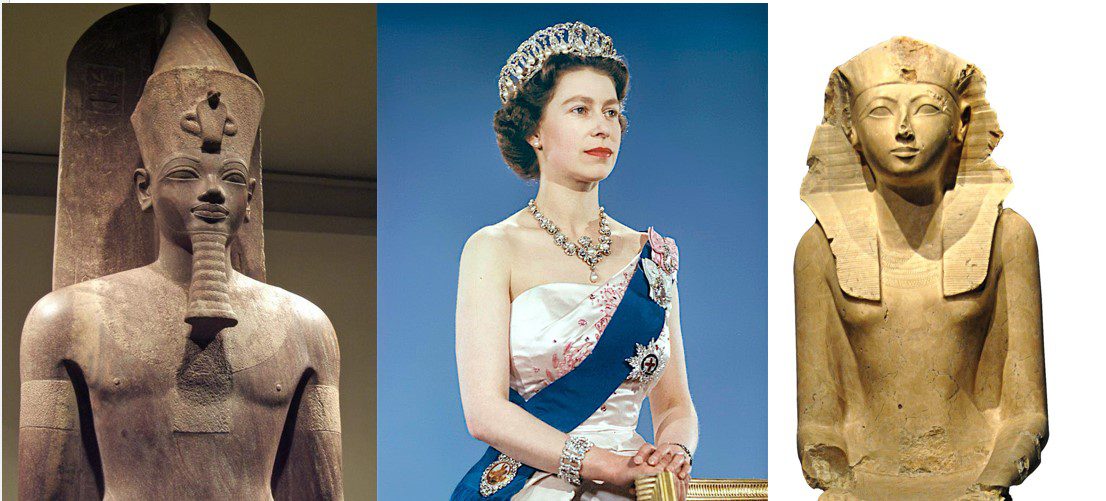This article compares and contrasts the lives and reigns of two powerful Queens of Ancient Egypt, Hatshepsut and Cleopatra. Hatshepsut declared herself the pharaoh of Egypt and oversaw impressive achievements including the construction of famous monumental buildings, successful expeditions, and the establishment of a prosperous and stable economy. She also faced challenges from members of the royal court and as a woman leader in a male-dominated society. Cleopatra, on the other hand, was a gifted diplomat and ruler who expanded Egypt’s influence during her reign. Her reign was marked by intense political intrigue and conflicts, ultimately leading to her downfall. Both Queens left indelible marks on Ancient Egypt’s history and continue to inspire women around the world.
Hatshepsut vs. Cleopatra: Comparing Two Powerful Queens of Ancient Egypt
Introduction
Ancient Egypt was a land of powerful and ambitious rulers, many of whom were women. Among these queens, two stand out as particularly noteworthy: Hatshepsut and Cleopatra. Both women were formidable leaders in their own right, but they ruled in vastly different times and circumstances. This article will compare and contrast the lives and reigns of these two queens, examining their achievements, their challenges, and their legacies.
Hatshepsut: The Female Pharaoh
Hatshepsut was born in the 15th century BCE and was the daughter of King Thutmose I. She married her half-brother, who became Thutmose II, but when he died, she became regent for her young stepson, Thutmose III. Rather than simply acting as a caretaker until her stepson was old enough to rule, Hatshepsut declared herself pharaoh and ruled Egypt in her own right.
Achievements
Hatshepsut’s reign was marked by a number of impressive achievements. She oversaw the construction of many monumental buildings, including the famous mortuary temple at Deir el-Bahri, which still stands today. She also sent expeditions to far-off lands, including Punt, a region likely located somewhere in present-day Somalia or Eritrea, to trade for exotic goods such as myrrh and frankincense. Additionally, she established a prosperous and stable economy and was known for her just rule and promotion of art and culture.
Challenges
Despite her many accomplishments, Hatshepsut was not without her challenges. Her decision to seize power was controversial, and she encountered opposition from members of the royal court who resented her rule. Additionally, because she was a woman in a male-dominated society, her legitimacy as pharaoh was constantly questioned. Hatshepsut also faced several military threats, though she was successful in defending Egypt from outside forces.
Legacy
Hatshepsut’s reign was a remarkable one, marked by many significant achievements. Though her success was not without challenges, she remains one of Ancient Egypt’s most impressive rulers, and her example as a powerful female leader continues to inspire to this day.
Cleopatra: The Last Pharaoh
Cleopatra was born in 69 BCE and was a descendant of one of Alexander the Great’s generals. After the death of her father, she became queen of Egypt and eventually embarked on a romance with Julius Caesar, thus securing Rome’s assistance in protecting her rule.
Achievements
Cleopatra is best known for her political acumen and her strategic alliances with Rome’s most powerful figures. She was a gifted diplomat and fluent in multiple languages, which allowed her to communicate effectively with leaders from various cultures. During her reign, she expanded Egypt’s influence and territory and was responsible for important cultural and intellectual advancements. Cleopatra was also a patron of the arts and sciences and remains famous for her legendary beauty and charisma.
Challenges
Cleopatra’s reign was marked by intense political intrigue and conflict. She faced numerous challenges, including uprisings within her own kingdom as well as external threats from other powers. She was also forced to navigate the complex and often treacherous politics of the Roman Empire, which ultimately led to her downfall.
Legacy
Cleopatra’s reputation as a powerful and captivating leader has persisted throughout history. She is remembered as a symbol of female power and independence, as well as a tragic figure who valiantly fought for her kingdom’s survival until the bitter end.
Conclusion
Hatshepsut and Cleopatra were both remarkable women who left indelible marks on Ancient Egypt’s history. Though they ruled during different times and under different circumstances, both women were celebrated for their leadership, their intelligence, and their tenacity. Today, their examples continue to inspire women around the world and remind us of the immense contributions that female leaders can make to society.
